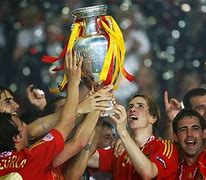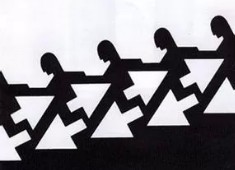Introduction
The UEFA European Championship, often referred to as the Euros, is one of the most prestigious football tournaments in the world. It brings together the finest national teams from across Europe to compete for the coveted title of continental champions. Since its inception, the tournament has grown in stature and popularity, captivating millions of fans with its thrilling matches and iconic moments. In this article, we will delve into the history of the Euros, exploring how it has evolved over the years and examining some of the key milestones that have shaped its legacy.
The Inception of the Euros
The idea of a European championship was first proposed in the 1920s, but it wasn't until 1958 that the tournament was officially established. The inaugural edition, held in 1960, was known as the UEFA European Nations' Cup and featured just four teams. The Soviet Union emerged as the first champions, defeating Yugoslavia in the final. This modest beginning laid the foundation for what would become one of the world's most significant football competitions.
Expansion and Growth
Over the years, the Euros have expanded in both size and scope. The second edition in 1964 saw the number of participating teams increase to eight, and by 1980, that number had doubled to sixteen. The tournament's format has also evolved, with group stages and knockout rounds introduced to accommodate the growing number of teams. The expansion has allowed more countries to compete, fostering greater diversity and excitement in the competition.
Iconic Moments and Legendary Players

The Euros have been the stage for some of the most memorable moments in football history. From the "Panenka" penalty by Antonín Panenka in 1976 to the "Gazza's goal" by Paul Gascoigne in 1996, these iconic events have become etched in the collective memory of football fans. The tournament has also witnessed the rise of legendary players who have left an indelible mark on the competition. Michel Platini's nine goals in the 1984 edition and Marco van Basten's spectacular volley in the 1988 final are just two examples of the brilliance that has graced the Euros.
The Modern Era
The Euros have continued to evolve in the 21st century, with the introduction of new innovations and changes to the tournament structure. The 2016 edition saw the number of participating teams increase to twentyfour, a move that was met with mixed reactions. While some argued that it diluted the quality of the competition, others saw it as an opportunity to include more nations and promote the growth of football across the continent. The modern Euros also feature stateoftheart technology, such as goalline technology and video assistant referees, to ensure fairness and accuracy in decisionmaking.
The Future of the Euros
Looking ahead, the future of the Euros looks bright. The tournament's popularity shows no signs of waning, and the passion of the fans remains as fervent as ever. UEFA has ambitious plans for the competition, including a proposed overhaul of the qualification process and the possibility of hosting the tournament in multiple countries. These changes aim to enhance the spectacle and competitiveness of the Euros, ensuring that it continues to captivate audiences for years to come.
Conclusion
The UEFA European Championship has come a long way since its humble beginnings in 1960. Through its expansion, the emergence of legendary players, and the introduction of new innovations, the tournament has established itself as a cornerstone of the football calendar. As we look forward to future editions, we can be sure that the Euros will continue to provide unforgettable moments and fierce competition, solidifying its place as one of the world's premier sporting events.

2004新澳精准资料免费提供,最新成语解释落实_The51.94....

2024澳门新资料大全免费直播,最新成语解释落实_HD36.60....

亚洲欧美日本私人家庭影院:真实性答案曝光落实在现代生活中,随着...

香港的转型与未来展望:融合传统与现代的独特路径引言香港,这个...

欧洲杯冠军奖励欧洲杯是欧洲足球的最高荣誉之一,每四年举办一次。对于获...